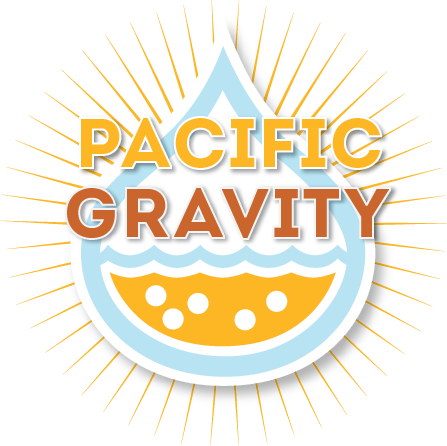How do I do a high gravity mash?
Answer: There are several techniques that can be used, depending on the approach you want to use and the equipment you have available. These include the no-sparge method, the long boil method and the parti-gyle method. Today I’ll describe another method which goes by the name of double brew method by Randy Mosher, or the reiterated mash method as described by Chris Colby of BYO. The double brew method has the advantage of maintaining fairly good extract efficiency and minimizing boil times. This is the method used by most scotch distilleries, where they routinely make a high-gravity wort and can’t tolerate inefficiencies. The down side of the technique is that it takes additional equipment and a longer brewing day.
The double brew method uses two (or more) batches of grain. The key trick is to use the second runnings from the first batch as the strike water for the second batch. This leads to a monster gravity of the runnings from the second batch of grain. The process works well for any high gravity brew, such as Barleywine, Double IPA, Wee Heavy or Doppelbock. I used this to produce 10 gallons of Russian Imperial Stout with a starting gravity of 1.100. You can refer to the complete recipe at http://www.picobrewery.com/recipes/impstout3.html.
The process is a bit complicated, so refer to the figure below. Step #1 is to take half of the grain (22 of the 44 pounds in this case) and do a normal-type infusion mash with 6 ½ gallons of water. This gives a rather thick mash with 1.18 quarts of water per pound of grain. Target temperature was 152oF. Step #2 is to take the first runnings directly into the boiling kettle, so in this respect, is works like a no-sparge batch. Step #3 is to add sparge water to the grains. Step #4 is to take the second runnings and collect them in a separate pot. At this point, the first batch of grain is pretty much spent and the mash tun can be dumped out. While you are doing this, the second runnings have to be reheated back up to about 172oF, before moving on to step #5, which is to mash in the second batch of grain. In this case, the target temperature of the second batch was 150oF, but you may want to adjust that depending on the style you are brewing. Step #6 is to collect the runoff from the second mash, which goes into the boiling kettle and is combined with the first runnings. The last step of the mash process is to sparge the second batch of grain. Note that the gravity of these runnings is still quite high. This represents the biggest loss of the method. If you are concerned about the loss, you can make a small beer with the remainder, as you would do with a parti-gyle. The scotch distilleries do a 3rd running, which becomes the strike water for the batch of wort they brew the next day. Overall, I got a 73% efficiency, compared to my 77% efficiency for a normal gravity beer. Not too bad for a huge beer.
If you want to tweak the process, refer to the links above, or to another Mosher article that you can find in the Brewing Techniques archives. These articles describe how much water is absorbed by the grain and the amount of sugars in the second runnings. Treat each batch as a no-sparge batch, and then add in the runoff gravity from the first batch and add it to the second. Sum up all the contributions and you can calculate the starting gravity.
Now that the mash is done, the rest proceeds like a normal batch of beer. When calculating the hop profile, keep in mind that the extraction efficiency in high gravity wort is reduced, so you need to add about 20% more boiling hops for the same bitterness. Pick a yeast that has high alcohol tolerance, and make a big healthy starter. Finally, give your finished beer plenty of time to age. My imperial stout, brewed at the end of 2009, did poorly in competitions until it was entered in the California State Homebrew Competition, judged in November, 2010, nearly a year later. How did it do? 40 points and a first place.
Got a question for the Brewmaster? Drop me a line at brewmaster@picobrewery.com. Also, an archive of prior questions can be found at the Picobrewery website at http://www.picobrewery.com.


